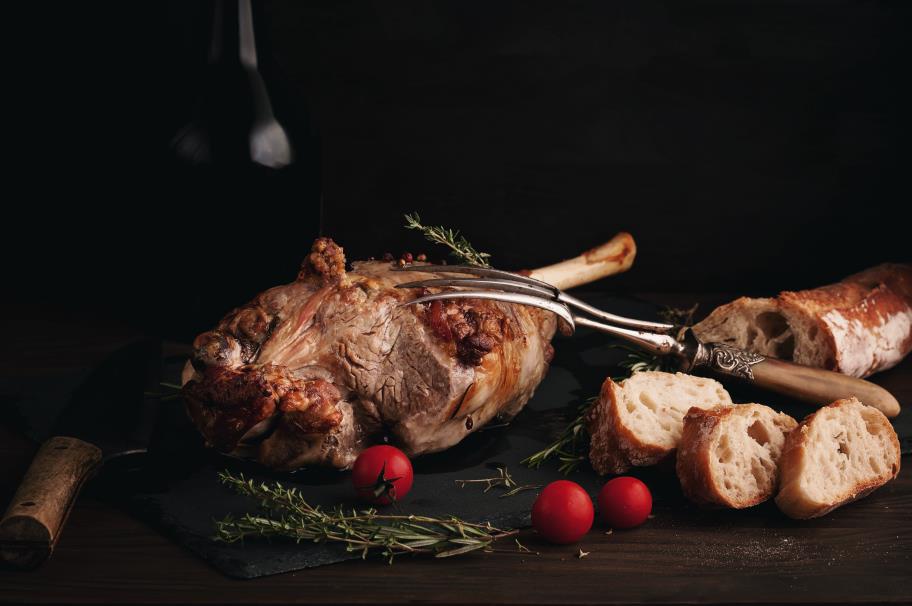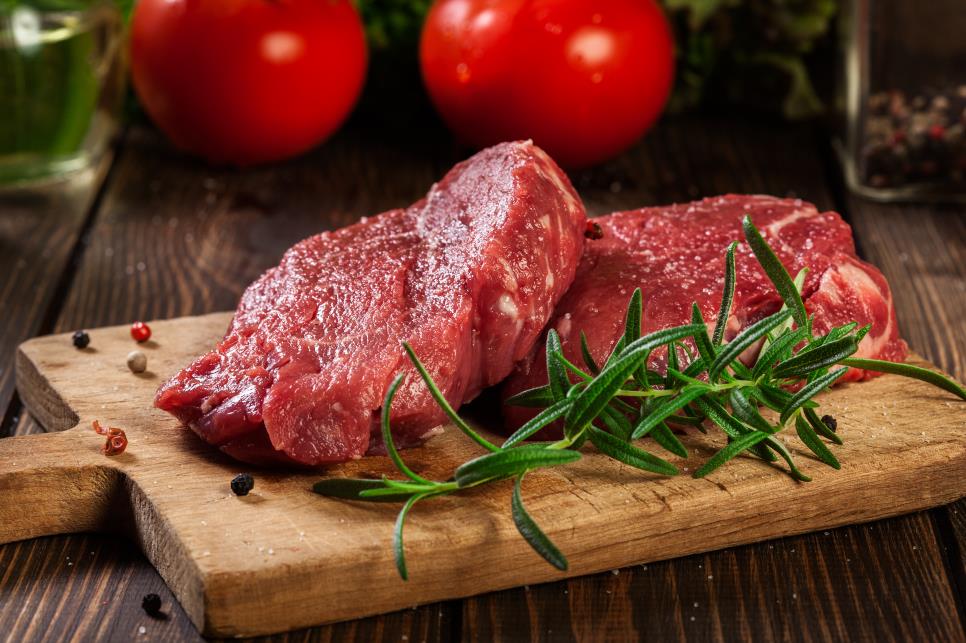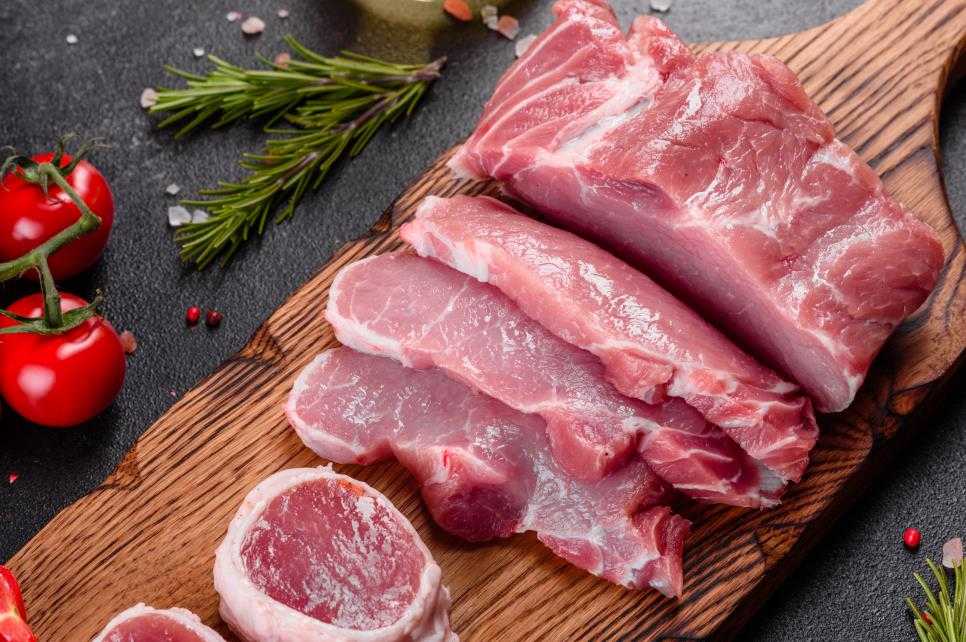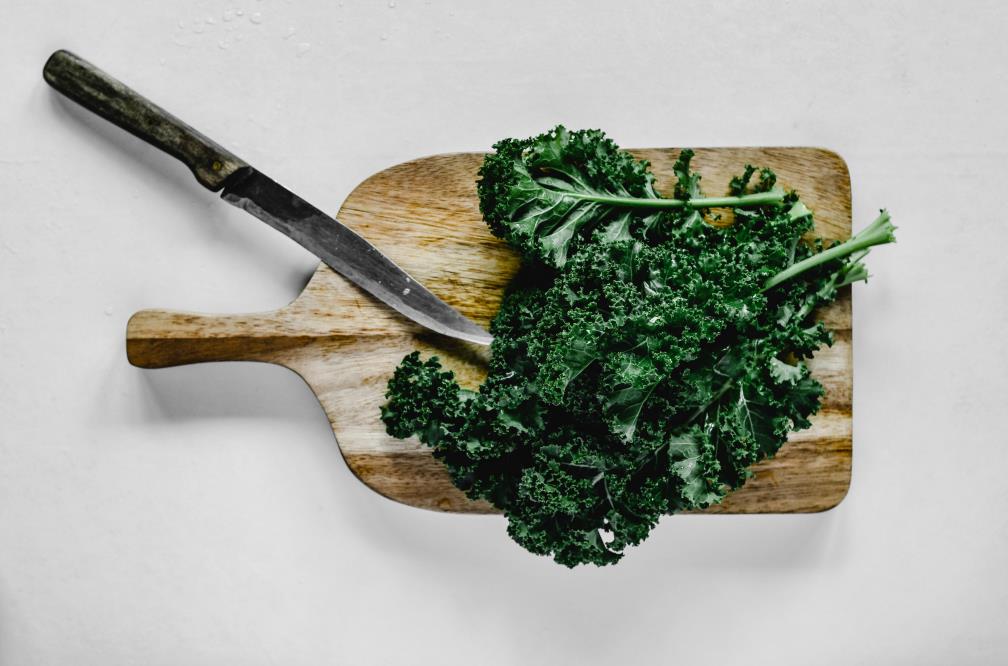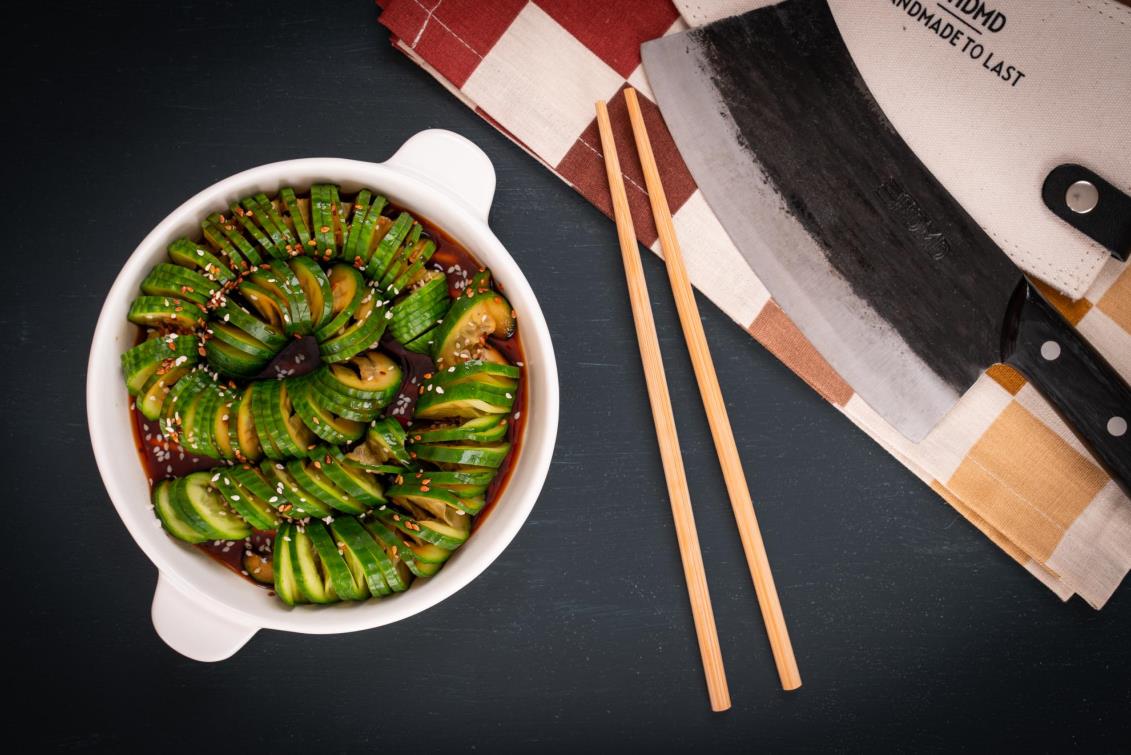When it comes to parsley, nailing the perfect chiffonade and chopped cuts depends entirely on your knife moves. Mastering this culinary art will allow you to speed up prep work and have flawlessly cut parsley ready for use each time.
Parsley can be used as garnish, condiment, flavoring, and even form the base of your favorite foods. Let us learn how to cut parsley for topping our favorite dishes while keeping sure the mess stays to a bare minimum.
How to cut parsley:
- Rinse the parsley under cold water and dry.
- Use a sharp knife to cut out thick, large stems.
- Stack the parsley together tightly.
- For chop, slice the bunch of parsley in a rocking motion.
- For chiffonade, roll the parsley and slice through.
- Alternatively, you may use kitchen shears.
Did the above instructions go over your head? Don’t worry; our detailed guide will break down things and make them easier.
Table of contents
What is parsley?
Parsley is a bright green biennial plant featuring long stalks and green leaves. Native to Mediterranean Europe, the plant is grown worldwide and is an herb used primarily for flavoring and garnish. There are four varieties of parsley, namely flat-leaf parsley, curly leaf, Hamburg, and Japanese parsley. Curly leaf parsley and flat-leaf are the most commonly used parsley varieties.
How to prepare parsley
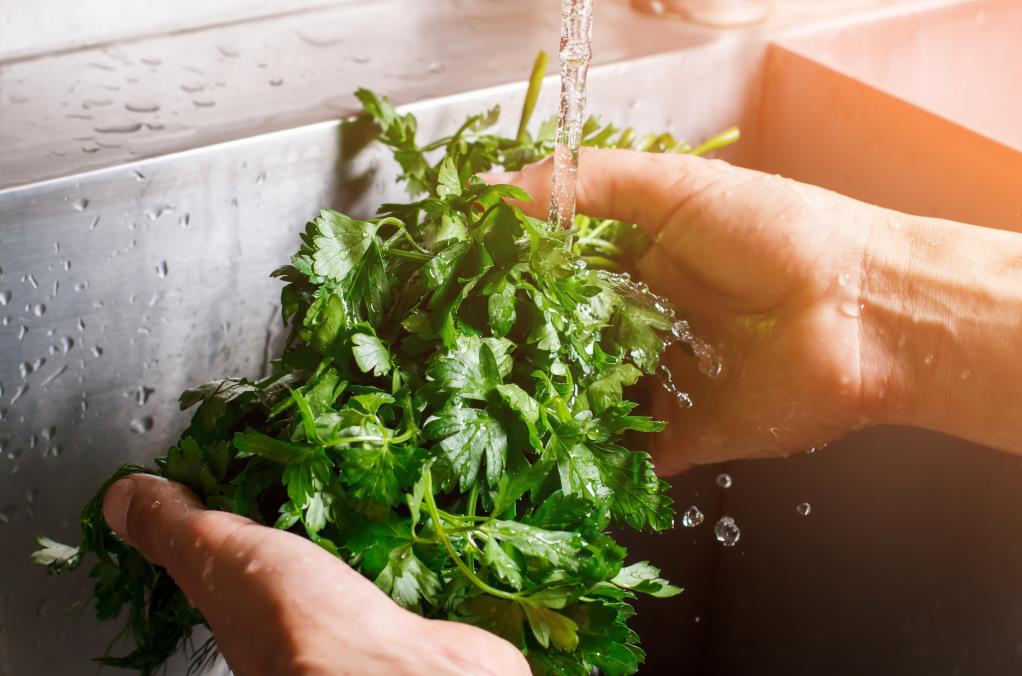
Preparing this beautiful herb consists of two simple steps: Cleaning parsley and gathering the cutting tools.
How to clean parsley
- In a colander, rinse the parsley under cold running water. Make sure you spin it a few times to loosen any dirt. Cold water will ensure your parsley doesn’t blanch and ensure that you get the most flavor and freshness out of the herb.
- Next, completely dry out your parsley for easy cutting. Wet parsley sticks onto the knife (and hands), giving the user a hard time cutting it. You can dry out the parsley by shaking the water out of the colander. A salad spinner can also help you get rid of the excess water from the parsley.
- Finally, put the parsley on a few paper towels to dry them out.
Gather as much parsley as you wish to use, storing the rest for later.
Gathering the tools
Now that your bundle of parsley is clean and ready to use, you must gather your cutting tools. Cutting parsley only requires the basics, a sharp knife, a clean cutting board, and a pair of hands! A sharp chef knife works best for cutting parsley. Next, you must consider choosing the right cutting board for this deed. As for the hands, you have what you have!
Handpicked for you
True cutting power in the palm of your hand
How to cut parsley
After you have cleaned the parsley, begin by cutting the herb’s more significant and thicker stems. Place the parsley bunch on a cutting board and align all the stems. Next, use your sharp knife to cut through the portion of stems that is thick, large, and primarily leafless. You may dispose of the branches, compost them, or save them for use in soups and stocks.
More extensive and thicker stems are noticeable, so they must be cut. Smaller ones higher up in the parsley are negligible and don’t need to be. Nevertheless, you may choose to remove all the leaves from the stems. This removal is done chiefly when a recipe calls for finely chopped parsley.
If you don’t need finely chopped parsley and want to save yourself the trouble of picking all the leaves, you can use your sharp knife. You need to hold the bunch and cut away the stems through the leaves at an approximately 30-degree angle. Next, rotate the bunch and use the same angle to cut at the stems, stripping away the leaves.
How to chop parsley
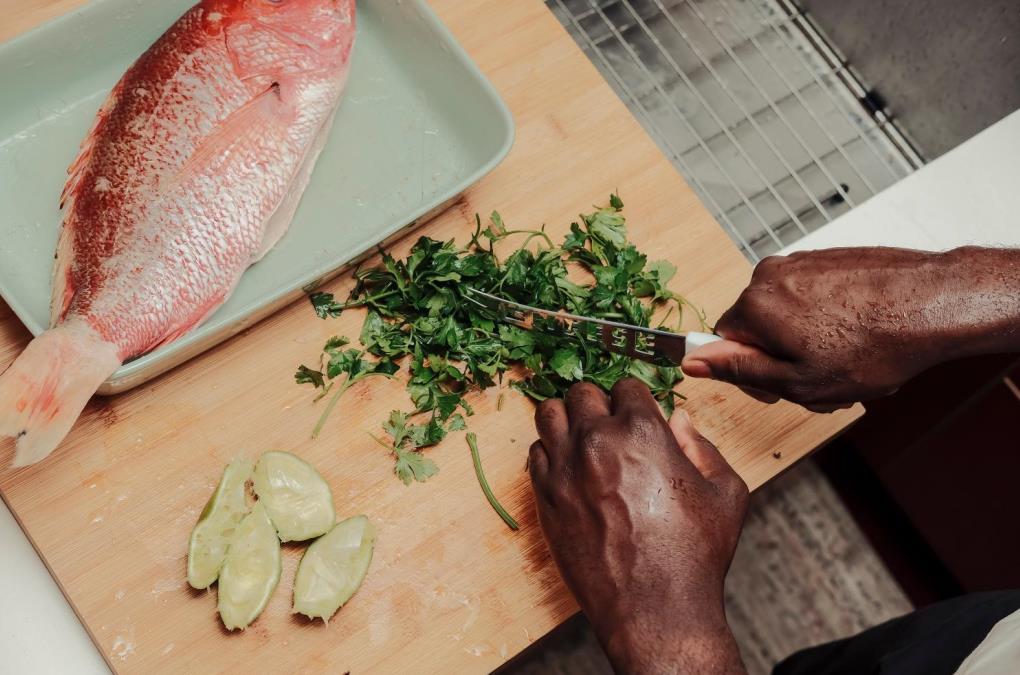
The most common method of cutting up parsley is chopping it. Grilled veggies, roasted potatoes, salads, and even pasta come alive when chopped parsley is tossed over them.
For chopping up parsley, the easiest way is the “rocking method.” Here is what you need to do:
- Use your hands to bunch the parsley together tightly. Rotate and twist the leaves such that they are tightly stacked together. Hold them together in place using your non-dominant hand, imitating a claw. This grip will keep your fingers at bay from the knife.
- Next, use a sharp chef knife and hold it in your dominant hand, with your grip close to the blade. Begin rocking the knife up and down through the parsley. Make sure that the tip of the knife blade doesn’t stray away from the cutting board for better control and cleaner cutting. Otherwise, you will risk spreading parsley leaves all over.
- Work your way through the entire parsley bunch using the rock-chop method. Your chopped parsley is now ready for use.
- For finer chopped parsley, rotate the chopped parsley (it’s easier if you turn the cutting board instead), and use the same rock-chop method for cutting through the leaves once more.
How to chiffonade parsley
Another way of cutting up a bunch of parsley is chiffonade. Chiffonade allows cutting thin strips of leafy herbs such as parsley, primarily for garnishing soups, casseroles, steaks, and similar recipes. Cutting them this way will allow the parsley to harmoniously align with your dish without coming off too strong. Here is how you’ll cut parsley into chiffonade:
- Clean the parsley and remove the leaves from the stems.
- Next, stack the leaves in a neat pile together on the cutting board.
- Once the leaves are piled, roll them together tightly in a cigar-like shape. Hold on to the leaves with your non-dominant hand.
- Holding your sharp chef knife in your dominant hand, make sure the blade’s tip touches the cutting board while the heel and handle are lifted above.
- Run your knife onto the rolled herbs in a smooth, slicing motion. Slicing through the stack will allow for a cleaner chiffonade and prevent it from crushing the leaves altogether.
- After a single slicing motion, repeat the move by lifting the knife while the tip keeps touching the board.
- Continue till all the leaves have been cut.
Cutting parsley with kitchen shears
Many people prefer to cut parsley with kitchen shears instead of a knife. This method is an easy way of getting the job done. In this method, you need to gather the leaves in a glass bowl or even a glass, then grab your kitchen shears. Start by cutting into the leaves with the help of the shears. Continue cutting the parsley leaves until all the leaves are done. Voila, your parsley is all chopped and ready to go.
How to store parsley

When you buy a bunch of parsley, you might not be using it all at once. Here is how you can store the leftovers:
- Wash and dry the parsley with the stems intact. Next, use a glass container and fill it with enough water to immerse the stems. Put the parsley in the container and lightly cover it with a plastic bag. Storing it in the refrigerator like this will last you for about two weeks. However, you have to keep changing the water every 3-4 days.
- Another easy method of storing partially dry parsley is wrapping it in a damp cloth and keeping it in a plastic bag. This method will keep the parsley fresh for a few days (4-6 max).
FAQs
Does parsley regrow after cutting?
Yes, parsley regrows after cutting. Parsley is considered one of the fastest-growing herbs in the world. The more you cut it, the fuller the parsley plant will get.
What is the difference between parsley and cilantro?
Cilantro and parsley are often confused with one another because they are both green herbs having long stalks and flat leaves. However, the leaf’s shapes and distinct smell can differentiate between the two. While the parsley leaves appear to be more pointed, the leaves of the cilantro herb are more rounded. Moreover, cilantro has a strong citrusy smell, while parsley smells more like a mildly scented herb.
Can you eat parsley stems?
Even though the parsley stems are edible, it’s better not to eat them since they are bitter. You may use them in stocks or compost them instead.
Final words
Now that you have perfected the art of cutting up parsley, it’s time to showcase those skills! If you’re still looking for a sharp knife, to begin with, we might have some good ones for you at HDMD. Happy shopping!







